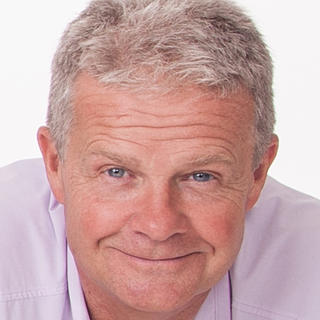Our top tips for getting the most from World Travel Market...
- Mark Wright, The Adventure Connection
- Oct 31, 2018
- 4 min read
Having experienced many years (this will be my 32nd WTM!) of trade shows myself, I can understand the stress and pressure which comes when getting yourself ready for an event. Exhibitions are an exciting and important part of life in the travel industry, but without organisation and preparation and, most importantly, follow up, they can be stressful and even a waste of time.
So here are my top tips for having a successful event - before, during and after.
1 – Plan, Plan, Plan...

Preparation is key. So if you're committing time and money, plan ahead and visualise your desired outcomes.
Ask yourself the following questions:
What are my objectives for the exhibition?
What would I most like to achieve from the exhibition?
What actions and activities will make sure I achieve these goals?
Having answers to these questions will give you a better understanding of what this exhibition has to offer, and what goals are attainable. Time seems to speed by during these exhibitions, so best to prepare everything beforehand.
2. Remember the practicalities

In preparing for a travel mart or exhibition, it’s sometimes easy to forget the basic necessities (or, as many people do, leave them until the last minute). Where are we going to be staying? Is the hotel close to the event? What is the transport like (are there any strikes planned at the same time as the event)?
I suggest booking your accommodation way in advance to make sure you are fully prepared and to save yourself some money. Research any necessary transport to ensure you give yourself enough time to get to the event. It might all seem obvious, but there’s nothing worse than finishing a nine-hour event and then realising you have an hour's schlep across the city.
Equally, plan your evenings and meals with colleagues, contacts and other delegates. Events can be tiring (they are also fun, promise!) so book ahead - you don't want to spend an hour trying to find a table afterwards when all of the other delegates have beaten you to it.

3. Be open-minded about product and suppliers
The event might be the only time you will meet these new people, whether they be suppliers, tourist boards, buyers etc.
It’s so important to stay open-minded about who you meet, and to get a face to face impression of potential partners.
Then, when the event is over, then is the time to go through everybody and make some more rational decisions.
4. List (nice and early) what you need to bring!

This could be anything from a simple background information sheet, to business cards and leaflets, roll up banners, giveaways etc.
I'd strongly advise having something to leave behind with potential partners to ensure you are remembered. They'll be meeting a lot of other potential suitors too, so make sure your leave behind stays on their desk for longer (and is used) when they get back to the office.
5. Attend as much as possible

Sometimes, it's not until you arrive at the event, that you realise how much is going on. There’s so much to hear and see, it seems like there can’t possibly be enough time to do everything.
However, don’t stress. These events usually flow on nicely from meetings (and can often complement them) so make the most of it and attend as many functions and talks as possible. Before arriving at the event, make a note of all the talks that are going on and prioritise and schedule them around your own meetings. Perhaps, if attending with colleagues, you could split up the different functions among you, and then bring all your notes and ideas together afterwards.
6. Follow up, follow up, follow up, follow up....

This is, without a doubt, our most important piece of advice. I'd even go as far as to say you should make a follow up plan.
You will arrive home with more business cards and new contacts than you can imagine, but the longer you leave them sitting in a pile, the more work you are making for yourself in the long run.
Once you're home (or back in the office), be sure to sort through your new contacts into categories and priorities. It’s best to do some very short follow ups straight away, keeping it brief, perhaps mentioning the exhibition whilst it’s still fresh in everyone’s mind. The last thing most people will want is a very long email telling them everything about your company. Much better to compose a one-liner saying "Hi. We met at XXXXXX exhibition, just touching base and will write to you in a week or so once you've got settled back in the office. When's the best time to speak again?"
Then from these follow ups, you can schedule further follow ups, and so on.
Organisation is another key element of follow ups. Using To Do lists, or a CRM system like Pipedrive where you can store all your data, is a life saver. And don’t just leave those business cards sitting in your pocket for a weeks. Get them into your contacts database as soon as possible.
Please contact The Adventure Connection if you'd like advice and tips for planning your next exhibition.





Comments